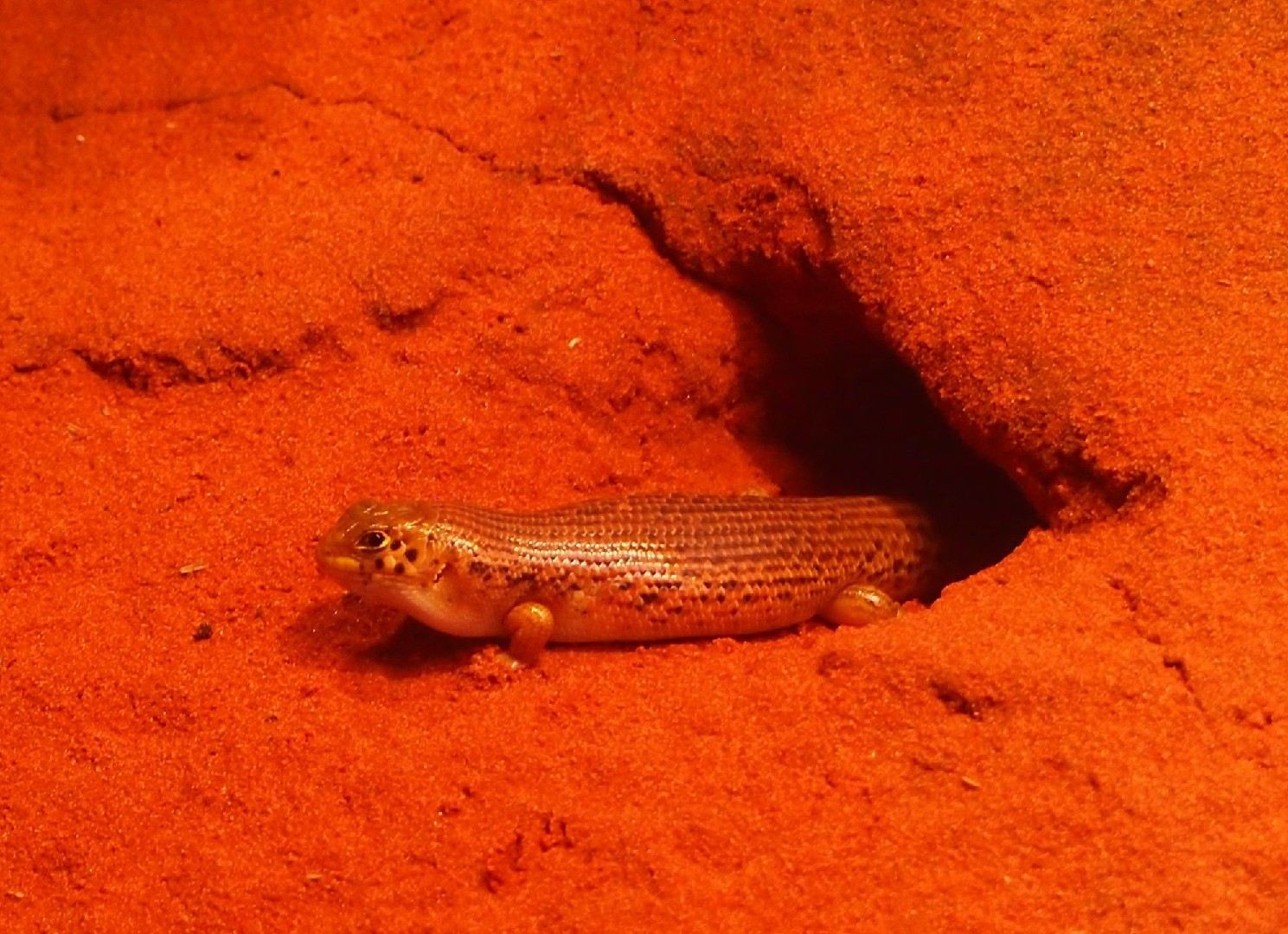Desert skink
A species of Liopholis, Also known as Desert egernia Scientific name : Liopholis inornata Genus : Liopholis
Desert skink, A species of Liopholis
Also known as:
Desert egernia
Scientific name: Liopholis inornata
Genus: Liopholis
Content
Description General Info
 Photo By Mark Marathon , used under CC-BY-SA-3.0 /Cropped and compressed from original
Photo By Mark Marathon , used under CC-BY-SA-3.0 /Cropped and compressed from original Description
As a specialist in the field of animal science, the desert skink is a fascinating subject. This species exhibits a primarily nocturnal lifestyle, known to become active at sunset and remain so throughout the night, attuned to its arid Australian environment. Notably, it is a termite specialist, utilising its powerful jaws to break into termite mounds, a diet that is both an effective survival mechanism and integral to its ecological role as a pest controller.
General Info
Lifespan
5-8 years
Diet
The diet of desert skink primarily consists of ectothermic prey, most notably insects and spiders. Desert skink's consumption extends to small lizards, showcasing a broader carnivorous palate.
Appearance
Desert skink is a small, ground-dwelling reptile, notable for its elongated body and smooth, sleek scales. Its primary coloration is a dull, sandy brown, providing effective camouflage in its arid habitat. The most distinguishing feature is its sharply pointed snout, making it stand out among its relatives. No significant differences in appearance due to age, gender, or subspecies have been noted.
Behavior
Desert skink are typically nocturnal, becoming active during the cooler hours. This species displays a high degree of territoriality, defending their habitats from intruders through aggressive posturing and physical combat. Preferring solitariness, their interactions are primarily limited to mating season. Foraging revolves around their insectivorous diet.
Population
Stable
Scientific Classification
Phylum
Chordates Class
Reptiles Order
Lizards and snakes Family
Skinks Genus
Liopholis Species
Desert skink